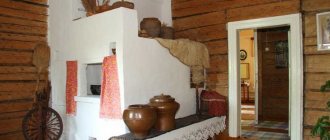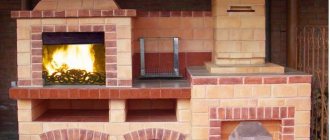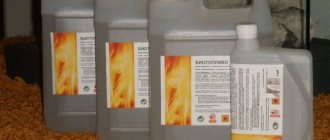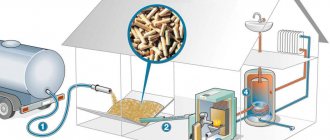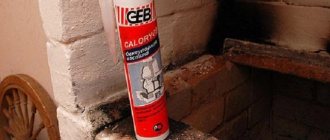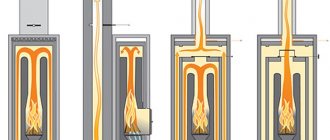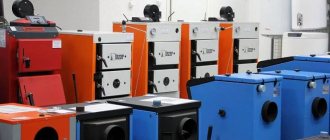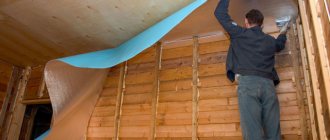- Angular
- Unilateral
- Country
A fireplace is a device for heating a room, which in some cases may have an original design. When choosing, you need to pay attention to both its external component and technical characteristics. It is also important to consider the future location, style of interior decoration of the room, firebox design and the type of fuel you plan to use. Today we will look at examples of beautiful fireplaces in a private house with photo examples of work, and also pay attention to each of the varieties.
Types of fireplaces
We suggest considering the types of fireplaces. They vary in the type of fuel used, location in the home, and style of execution.
The following types are distinguished:
- Stove-fireplace;
- Stove-fireplace with a water circuit (with the ability to connect to the heating system);
- Outdoor fireplace (resistant to weather changes, used for landscape design);
- Fireplace-barbecue (outdoor fireplace with cooking facilities);
- Decorative (used exclusively for design purposes).
Fireplace fuel
Depending on the type of fuel used, fireplaces are:
- Wood-burning. They consist of a firebox, chimney and frame. Traditional and most common fireplaces. Equipped with fire-resistant materials
- Gas. They operate with a gas supply and require a chimney. They use natural gas methane or liquefied propane-butane as fuel. A live fire looks no worse than in wood-burning fireplaces. One of the main advantages is high fire safety.
- Eco-fireplaces. They run on vegetable biofuels (ethyl alcohol, bioethanol). These fireplaces perfectly complement existing heating. Thanks to them, thermal energy is completely preserved in the room (in conventional fireplaces, 60% of the heat escapes through the chimney).
- Electric fireplaces. They run on electricity and are a simple household appliance. Anyone can afford such a fireplace: they are inexpensive, do not require installation, provide the necessary heat, and look beautiful. The safest type of fireplace.
A wood-burning fireplace is best for creating a cozy atmosphere. It’s warm, you can look at the fire for hours, everything is complemented by the pleasant and unobtrusive smell of smoldering wood. Gas and eco-fireplaces are simpler and no less attractive. An electric fireplace is suitable for both a cottage and an apartment: the most budget-friendly and safest option.
Fireplace location
According to the type of location in the room, fireplaces are of the following types:
- Frontal. Located near the wall, it is considered the most common. At the same time it can become a multifunctional heating device and a wonderful decoration for your interior.
- Angular. Such a fireplace can save a lot of space in the room. Corner fireplaces also have many interesting design solutions and look amazing.
- Built-in. The combustion stove is built into the wall and has an interesting finish. The built-in fireplace also saves space. Often such fireplaces are made in the modern or high-tech style, but you can also find classic versions.
- Suspension. This is a custom fireplace. Using special mechanisms, the hanging fireplace is attached to the ceiling and has the ability to rotate so that you can choose the position you like. A hanging fireplace can be installed either against the wall or in the center of the room.
- Bilateral. It has the property of dividing space and can be viewed from both sides. Suitable for studio apartments and rooms with an original layout.
- Portable. A unique solution for those who want to use a fireplace anywhere in the house. It does not have a foundation and can be easily moved to another room.
Choosing a style for the interior
It is best to choose a fireplace at the interior design planning stage. Then it will definitely fit perfectly and look great. Main styles:
- "Classical". Made from natural stone or expensive marble. It is distinguished by its simplicity of execution, lack of decoration (maximum carving). Most often these are wall-mounted U-shaped fireplaces. The composition of the fireplace is quite logical, balanced, and geometrically correct. A classic fireplace will suit almost any interior.
- "Country". Many people like the “rustic” style of the fireplace: its simple design and large size create a warm and cozy atmosphere. The flavors of different countries are combined with rustic simplicity.
- "Modern". These elegant fireplaces have a brightness that emphasizes the individuality of the owner of the house. They should fit perfectly with the interior, so they need to be selected with good taste, or better yet, with the help of a designer.
- "Chalet". Although such a fireplace gives the impression of bulkiness, in fact, it takes up little space. It looks really expensive and immodest. At the same time, it is able to provide comfort.
- "Baroque". Famous palace style that shows grandeur. It will never go out of style. Baroque style fireplaces are ideal for living rooms in premium private homes.
- "High tech". A high-tech fireplace should be completely compatible with the interior of the same style. Simplicity and elegance of execution, strict geometry, laconicism are the main features of the style.
How did fireplaces appear? And why are they still relevant today?
Today we are already accustomed to seeing flames “floating” in the air and covered only by glass: in modern interiors of restaurants, cottages and luxury apartments. Today we are no longer surprised that in order to admire the fireplace we no longer need firewood. We are, of course, talking about biofireplaces running on environmentally friendly ethanol.
Man's passion for fire is inherent in nature. Almost since ancient times, when people learned to make fire and build houses, hearths with fires began to appear inside them. Primitive fireplaces quickly became the center of every household: first of all as a place for cooking, and secondly for heating the home.
Further improvement of fire pits led to the fact that they were divided into stoves and fireplaces, and the design and shape of these devices changed depending on the layout of the rooms and the status of the homeowner.
Of course, at first, fireplaces in houses performed mainly only the function of heating rooms, until at a certain point architects paid attention to the decorative potential of these devices. Since then, the shapes and sizes of fireplace hearths have changed many times, adapting to different types of interiors.
Of course, kings, courtiers and simply rich people “succeeded” most in decorating fireplace rooms - often using natural stone, carvings and even inclusions of precious materials, which led to the fact that fireplaces became not just a place where you can warm up, but the central decoration of rooms, halls and even entire palaces.
The design of these devices also changed. In the Middle Ages, open hearths had clearly elongated cornices that tapered upward, sometimes reaching the ceiling or vault of the chamber, as well as the smoke channel. The Gothic era brought rich decoration and architectural expansion to fireplace hearths, while Renaissance architects abandoned hoods, resulting in chimneys being installed in the walls of the building.
Until the 18th century, not a single fireplace was made without rich decorations, which, first of all, were supposed to show the guests of the house the wealth and status of the homeowner. Note that the characteristic shape of the familiar fireplace with a shelf was developed only at the beginning of the 19th century.
Currently, fireplace manufacturers still compete with each other with the shapes and richness of finishing of fireplace hearths, which makes it possible to select a fireplace and make it for even the most demanding customer. Today you can choose a fireplace that suits the style both for a classic wooden chalet-style house and for a classic Empire or Art Deco mansion, and it’s even easy to choose a fireplace for a modern, ultra-modern cottage.
Today there will definitely be no problems with the design of the fireplace. The same cannot be said about choosing a suitable design and location. Let's take a closer look at what types of modern fireplaces there are, and what are the design differences between them.
Peculiarities
Fireplaces appeared in Russia at the behest of Peter I. Returning from a trip to Europe, he ordered the nobility to build European fireplaces in their homes by royal decree. Fireplaces were built, but due to the harsh climate, stoves were not abandoned. Elizabeth, during whose time the construction of the Tsarskoye Selo and Peterhof palaces took place, ordered them to be equipped with Russian stoves. And only Catherine II brought back the fashion for beautifully equipped fireplaces in the homes of the Russian nobility.
Today, fireplaces are heated not only with wood, but also with gas, biofuel, wood pellets, and fuel briquettes. In a classic hearth, cubic meters of wood are burned, so fireplaces are not used as the main source of heat. Modern private houses have other heating methods - a steam boiler, a Dutch oven or a central heating system. But as auxiliary heating and a beautiful design solution, they are still popular.
Once the fireplace is installed, it must be allowed to dry completely before using it. A place for storing firewood should be prepared next to the fireplace. During use, you must remember to clean the firebox from combustion products and follow fire safety measures, which include the following steps.
- It is necessary to check the combustion opening and ensure that the chimney is in good working order. If they are not cleaned in time, the accumulated soot will reduce the traction properties of the structure and smoke will begin to penetrate into the room, creating the danger of carbon monoxide poisoning.
- You need to learn how to light a fireplace correctly, starting with a small amount of fuel. Firewood can be added only when the fire is actively “burning out”. If you put them all at once, they will quickly burn out and the heat will go into the chimney.
- There is another reason not to pack the firebox with a large amount of firewood; such overload can damage the walls of the fireplace and even lead to a fire.
- When using the fireplace, you should remember to open the damper.
- Do not add flammable liquids to the flame, throw garbage or painted wood, the toxic substances they contain can cause poisoning of people present in the room.
- The fireplace itself and the floor around it must be made of fire-resistant materials.
A fireplace with a live fire has its pros and cons, which should be taken into account if you decide to arrange it. The advantages include the following points:
- beautiful design, enriches and ennobles the interior;
- emphasizes status;
- a cozy romantic atmosphere is created in the living room;
- additional heating appears;
- the problem with dampness is solved.
Judging by the positive qualities, fireplaces are “started” for the soul, a pleasant mood and only a little for functional return. Serious negative aspects make you wonder if beauty and romance are so important. Judge for yourself:
- live fire is always dangerous, children and animals should be supervised;
- when first ignited, the room starts to smoke;
- you will have to take care of the fireplace, clean it, and monitor its serviceability;
- soot, soot, firewood do not contribute to ideal cleanliness in the living room;
- The efficiency of the fireplace is low; it cannot heat the whole house;
- combustion is associated with drafts;
- Arranging and maintaining a home is not cheap.
If you are not afraid of problems, you can get a cozy and beautiful room with a live, mesmerizing fire.
Modern
The basic design of such fireplaces is borrowed from the classical style, but visually distinguishing both types is not difficult. Classics are characterized by massiveness and solidity; modern models have more straight lines and bas-relief decorations.
This gives the designs that lightness, which makes them fit perfectly into modern minimalist interiors of offices and residential premises. This feature is not mandatory, but quite often the height of the modern fireplace almost matches the height of the ceilings in the room.
Power
To clarify the values, there is a standard NF D 35376, which was developed in France. It allows you to find out the nominal power of the firebox in kW - the amount of heat that the model can provide in three hours of operation.
It is very important not to confuse it with the maximum values that are usually indicated in the specifications for finished products. The fireplace reaches its maximum heating 45 minutes after lighting, and these power values are 2-3 times greater than its actual capabilities.
For reference:
- for a cozy room of 10 m² with a ceiling height of 2.5 m, 1 kW is required for heating;
- birch firewood (dry, humidity up to 14%) - 1 kg when burned gives 4 kW of energy.
Experts recommend choosing the power of metal structures 10-15% more than indicated in the passport of the finished product, because laboratory indicators, as a rule, do not coincide with real ones under normal operating conditions.
The high power of the firebox allows you to heat the room faster when the door is closed and maintain the temperature in smoldering mode longer. It is not recommended to use the maximum resource of the firebox for a long period of time; this will lead to its rapid wear.
The ability to supply the room with heat is ensured, not least by the dimensions of the model.
Tripartite
The main advantage of such models is their original design. Externally, the three-sided hearth looks like a fire pit. One side of it is built into the wall, and there is a chimney on top. Externally, the design looks very effective.
There are also weaknesses:
- Fireproof protection is required along the entire perimeter of the structure.
- Despite the three-way distribution of heat coming from the firebox, the greatest effect is inherent only in the front wall. This is explained by the fact that only behind it there is a reflective surface.
- Weak energy effect.
Gas option
Compared to a wood-burning fireplace, installing a gas-powered fireplace in an apartment has fewer restrictions and is not accompanied by as many authorities. Gas fireplaces can be divided into two groups: those consuming natural gas from a common pipeline and those consuming bottled gas. Fireplaces of the first group are also called chimney fireplaces due to the need to remove combustion products through the chimney, and the second group is called chimneyless.
Such a device requires connection and configuration, and this work is carried out only by representatives of gas services. Independent intervention in the design of such units is prohibited. The place for the fireplace must be equipped with a heat-insulating screen, located away from plumbing fixtures and checked by representatives of fire inspection authorities.
Fireplace system built into a special portal
Flueless fireplaces are self-contained, ready-to-use devices. They are compact in size and can be installed anywhere, even in furniture. It should be noted that this type of fireplace is not intended for heating. It only performs the function of interior decoration. Thanks to this, this type of fireplace in an apartment is considered absolutely safe. Its body does not even heat up during operation. The gas is in a special tank, which is hidden in the fireplace body. Its reserves are enough for several hours of continuous operation. The cylinders can be refilled and used again.
Such devices are often styled like classic fireplaces. The flame in it is alive, and instead of logs in the firebox there are dummies. The decoration of the fireplace deserves special attention. The absence of strict requirements makes it possible to use various materials. In this matter, everything depends on the taste of the designer. Possible finishing options include decorative stone, MDF panels, wood, and PVC.
On gas
Gas fireplaces differ from wood fireplaces, first of all, in the type of fuel used: this will require a gas line in the house. A high-quality and efficient chimney is also required here: this is an important condition for the safe operation of the device. The gas-powered design does not have to be stationary: on sale you can find mobile fireplaces that make it possible to change the location. This is especially convenient in cases where it is necessary to heat several rooms in turn: for this purpose, additional distribution of the supply pipeline is installed.
Strengths of gas fireplaces:
- Silence.
- High speed of kindling.
- Easy to use.
- High fire safety.
Types of fireplaces by installation method
Not only the size of the fireplace itself, but also its installation method affects the final choice. Therefore, it is worth considering all the advantages and disadvantages of the model you like.
Built-in fireplaces
Fireplace built into the wall
The built-in type of fireplaces is a structure recessed into the wall, which is installed at the stage of major repairs or construction. An effective option that saves usable space in the room, but is very risky. It is not always possible to correctly integrate a fireplace into the walls during renovation. This may cause problems later.
Wall fireplaces
Wall fireplace
As the name implies, these fireplace models are simply attached to the wall and do not have any built-in parts. Therefore, it is precisely such fireplaces that are recommended for installation in large rooms, since the massiveness of the structure will conceal the space and look ridiculous.
Island fireplaces
Island fireplace
Island fireplaces are usually installed so that the fire can be seen from all sides. In essence, it is a well-equipped heat-resistant platform installed on a high-quality floor covering with a chimney outlet. Although such fireplaces contain a fire barrier made of glass, its use requires increased safety.
Corner fireplaces
Corner fireplace
Corner fireplaces are designed specifically for placement in the corner of the room. One of the main advantages is that such a counter takes up little space and it becomes possible to create a corner of warmth and comfort for intimate gatherings. Another advantage is that you can place the chimney on one of two walls.
Wood burning
Of great importance when building this type of fireplace is how correctly the chimney was installed: this directly affects the quality and stability of the draft. Too long a channel will lead to rapid fuel burnout. If the length of the pipe is short, then the air flow will be insufficient: as a result, smoke and soot will begin to enter the home. All this indicates the importance of carrying out settlement activities, which it is advisable to entrust to professionals. It is best to lay the hearth at the stage of building the house. It is possible to fit it into an existing structure, but this usually causes some difficulties.
In addition to the chimney, the fireplace also includes a firebox and a portal. Traditional combustion chambers are made open: in this version, the fire and the room are separated by a small void of several tens of centimeters. To reduce heat loss and increase the energy efficiency and safety of the fireplace, it is better to use a closed firebox.
In this case, the fire and the room are separated by a door made of tempered glass or ceramics that can withstand temperatures up to +800 degrees. The so-called can be used as a material for the partition. “clean glass” that does not become dirty during operation. The firebox is made of refractory bricks or ceramic blocks. There is an option with ready-made structures made of cast iron or heat-resistant steel.
The portal is the front part of the fireplace, consisting of various decorative parts. The choice of material for the portal is largely influenced by the design of the firebox (that is, how close the fire is located). Most often it is made of marble, brick, granite, stone or ceramic. If the outer surface of the structure does not heat up, you can use wood to decorate the portal - oak, maple or more valuable species.
Choosing a place for a fireplace in the house. What should you consider?
Whatever location you choose for the fireplace, you should remember the safety measures:
- Do not place furniture too close to the fireplace, otherwise it may ignite from a spark. Optimally - no closer than 60 cm from the fireplace;
- The floor around the fireplace should be protected with non-combustible material (for example, ceramic tiles) with a width of at least 50 cm. If you choose an open fireplace, the safe area should be even larger - from 100 cm;
- The heating power of the fireplace should be adjusted according to the size of the room. Otherwise, the room temperature will be too high after lighting the fire;
- The dimensions of the oven should approximately correspond to the proportions: A: B: C = 6: 5: 4, where A is the width of the oven, B is the height and C is its depth;
- When choosing a large and heavy fireplace, it is better to strengthen the floor and ceiling underneath;
- Check ventilation shafts regularly for clogging with sediment and ash. Clean them in a timely manner to avoid smoke or fire.
Hi-Tech
Thanks to the use of high technologies for the manufacture of the hearth, it is given an original futuristic shape. An innovative approach allows the use of modern fireproof materials - all possible combinations of glass, metals, periclase, fireclay, concrete, etc.
The most unexpected shapes allow you to fit such a fireplace into any interior. It is important to understand that an increase in external beauty does not always have a positive effect on the efficiency of the device. It is recommended to clarify this question before purchasing the option you like.
Nuances of choice
When choosing a fireplace, you should consider a number of criteria.
- Building type. In a frame house or a house made of SIP panels, a powerful classic fireplace made of stone or brick will look too massive. You can purchase a factory-made hearth with heating functions. It must be installed in a frame building at a certain distance from the wall. All types of fireplaces are suitable for a house made of timber. They are erected against a load-bearing wall, retreating a short distance from it. For a house on screw piles, you will have to add four more piles of 108 diameter under the fireplace. If the space allows, any fireplace can be installed in a brick building.
- The choice of a home fireplace is influenced by the tasks assigned to it: to heat the room you will need a fireplace with a water circuit, an electric or bio-fireplace looks good in a decorative design, for cooking with “smoke” a fireplace-barbecue is chosen. If you have very little space and money, but really want a fireplace, you can use a false fireplace. Outwardly, it looks like an ordinary one, but you can’t light a fire in it.
- The size of the home directly depends on the scale of the room itself - a large front design is suitable for a large room, for a small room you can choose a neat corner model.
- When thinking about a fireplace, you should decide for yourself what type of fuel you would like to see in your hearth. Electric, gas and bio fireplaces do not require constant cleaning and do not create dirt around them. But those who like to sit comfortably in a chair by a live fire with the pleasant crackling of firewood will prefer the classic wood-burning option.
Island
These types of fireplaces are distinguished by their original design, significantly inferior in efficiency to other models. In terms of heat release, they resemble a regular fire. The island hearth design includes a heat-resistant platform installed on top of the floor finish. It is sometimes fenced with glass along the perimeter. There are also completely open designs that create the effect of an ancient hearth: such a fireplace must be handled very carefully.
On top of the site you definitely need a smoke catcher that is connected to the chimney. In general, the entire structure has decent dimensions, so it cannot be used in small or medium-sized rooms. In any case, before installation it is necessary to consult with specialists. You can also find pendant-type island fireplaces: they are attached to the ceiling and seem to float above the floor. Most often, they are given a design that matches the Scandinavian style.
Criteria: how to choose a fireplace insert
Choosing a fireplace insert is not a quick and rather painstaking process. An expert must be involved here, because an ignorant person simply cannot know what types of these devices exist and their current description. But the final choice is based precisely on this knowledge.
When choosing a fireplace insert, you need to decide whether it will be a closed or open type
That is why attention should be paid to the closed type, which implies the presence of tempered glass in front of the woodpile. You can still watch the glare of the fire! However, do this:
However, do this:
- Safely;
- Without fear of starting a fire.
Fireplace equipment in the house: why do you need a foundation?
Any fireplace or stove is a large structure that is created from small parts. That is why a reliable foundation must be made that can withstand heavy loads.
The foundation for fireplaces does not differ from the foundations that are built for ordinary buildings. It would be good if this issue was resolved before the house was built. In this case, walls are erected and coatings are dismantled.
To ensure that the fireplace can be safely used in the home, it must be installed on a foundation.
It is necessary to create a gap of 6 cm between the foundation of the fireplace and the dwelling, covered with sand.
There are several points to pay attention to during installation:
- The foundation of the fireplace should be approximately 5cm larger than the foundation of the house;
- The minimum depth should be 50cm;
- The material for the foundation depends on the type of soil under the house;
- Most often, gravel, brick or rubble stone are used for the foundation.
The binding element for the foundation is lime-cement mortar. All this helps create a strong foundation that can withstand any load.
Country
These hearths are quickly recognizable by the massive wooden beams that form the upper parts of the portal. There is also an extensive “sole” that gives the entire structure a “D” - shaped configuration. Translated into Russian, the name of the style sounds like “province” or “village”. This indicates the priority of simple but effective solutions.
The main material for the hearth is “sandstone” or “shell rock”, which is malleable in processing and retains heat well. Gypsum material is often used to decorate the outer surface of the chimney. It is also easy to process and hardens quickly.
Biofireplaces
These devices are becoming more fashionable and popular every year. Their main advantage is environmental friendliness and cleanliness of work. That's why they were called bio-fireplaces or eco-fireplaces.
Why are bio-fireplace fireplaces cleaner than traditional models? It's all about the fuel: they don't require firewood, coal or briquettes, just add biofuel (usually ethanol) to the fireplace, in liquid or gel form. Moreover, bioethanol fireplaces are easy to install because they (like electric fireplaces) do not require connection to a chimney. Therefore, they can be installed in almost any room and anywhere in your home.
The big advantage of biofireplaces is their wide range of designs. There are fireplaces in a decorative steel frame, there are products made of natural stone, and there are also eco-fireplaces with a completely glass frame, so that the fire is visible from all sides.
You can also buy a biofireplace with a tank for essential oils, as well as a model with remote control. Portable biofireplace models can be freely customized depending on your preferences, enjoying the sight of flames in different parts of the house. In addition, they have beautiful, modern finishes.
Corner
The most attractive and popular fireplace designs that do not take up much space. The place where they are installed are corner areas, which does not cause clutter in the space. The chimney can be located on any wall near which the fireplace is mounted.
The walls of the combustion chamber are given a traditional inclined shape. There are also more modern two-chamber fireboxes. The angular positioning of the structure does not create additional obstacles to its design. External decoration is allowed using concrete, stone, brick, tiles, etc.
Peculiarities
It is quite easy and simple to choose a place to locate a fireplace in any home if you know the distinctive design features of all types of a given fireplace.
It is necessary to highlight several types of decorative stoves, the distinctive features of which are the way they are located in the home:
Built-in. The advantage of this location of the hearth is that it saves room space. The downside is the difficulty of installation. It should be noted that such a heating design is not always provided for by the room design. Consequently, in order to install this version of the fireplace, it becomes necessary to make a place in the wall for the hearth and chimney.
A distinctive feature of the various options for a home fire is the presence or absence of a door on the fuel hole:
- A variant of a decorative stove without a door with an open firebox.
- The fuel hole of the fireplace is closed using a special door equipped with mechanisms to make it convenient to open and close the firebox. The doors of such models are made of heat-resistant glass.
It is necessary to highlight one more distinctive feature of fireplaces - the method of heat radiation:
- Fireplace models that radiate heat from one side are the most popular and widespread. They are distinguished by their simplicity of design and excellent heat dissipation.
- Decorative stoves that radiate heat from both sides. The advantage of such designs is their original appearance. But it is necessary to highlight a number of negative qualities of these models. Fireplace models that emit heat from both sides are characterized by lower heat transfer and an increased volume of required air. Accordingly, the area of the protected surface in front of the fire should be significantly larger.
- Options for home hearths that radiate heat from three sides. The disadvantages of such options are low heat transfer and a large area of protected surface in front of the fireplace.
Built-in
These structures take up the least amount of living space, because... built into the wall surface. There are also models in the form of a column: the lower part acts as a firebox, and the upper part acts as a chimney. In order to best fit a built-in fireplace into the interior of the room, it is recommended to initially include its design in the house design.
If this is neglected, during installation you will have to cut down the walls for the fireplace and chimney duct. In this case, it is not always possible to place the structure where you would like. Additional problems can be caused by insignificant wall thickness.
Variety of fireplaces by type of fuel used
The flame can be produced using various fuels. And all the delights of progress are successfully used in the production of modern fireplaces. So everyone can choose for themselves not only a beautiful, but also the most practical fireplace.
Wood burning fireplaces
Wood-burning fireplace
Fireplaces burning wood or coal are a timeless classic for centuries. These are the models that many people associate with home comfort. Despite the simple structure of the fireplace itself, such designs are intended exclusively for private homes due to safety reasons. The technology for laying it is such that it is carried out only at the initial stages of construction.
But this is not all the pitfalls:
Wood-burning fireplaces are not designed to heat a room; they produce only a small amount of heat. In principle, whoever installs fireplaces for heating now does so for the soul and comfort. After each fuel burnout, a large amount of ash accumulates in the fireplace, which must be cleaned out. This is a dirty and difficult matter. For those who do not like this type of housework, it is better to carefully weigh all the pros and cons of this type of fireplace. During the combustion of wood, sparks are released, sometimes hot coals fall out of the firebox, which can cause a fire.
And besides, the safety of children near such a fireplace may be at risk. When installing such a fireplace, you should pay attention to the design of the chimney, which, if installed incorrectly, can send all the smoke indoors.
And yet, the monotonous crackle of firewood, real flames, and the wonderful smell emanating from the fireplace makes it incredibly popular among fans of such a home fire.
Gas fireplaces
Gas fuel fireplaces today are an excellent alternative to the good old wood fireplaces, unlike which they do not require constant maintenance. In addition, the simplicity of the design allows such fireplaces to be installed in almost any room where central heating is present. In addition, supplying bottled gas to power such a fireplace is also possible.
A gas fireplace, unlike a wood fireplace, does not require constant maintenance
But, as elsewhere, the installation and operation of gas fireplaces has its own characteristics:
- It is obligatory to have the right authorized gas service authorities available for installation.
- Ineffectiveness of the heat produced - most of it will evaporate into the chimney.
- The supply of gas pipes, as well as the installation of a fireplace with a chimney, is quite an expensive undertaking.
- Since gas fuel creates a “living” flame, enhanced fire safety measures should also be taken.
Despite all these warnings, a gas fireplace is safer than a wood fireplace and does not require a special chimney installation - it can simply be taken outside.
Electric fireplaces
Fireplaces powered by electricity are an excellent option for those who want a home fire, but do not want to have problems with maintenance, installation and constant maintenance of the fireplace.
Electric fireplace
Such models have proven themselves exclusively on the positive side in the market:
- does not require fuel;
- To operate, you only need current from a regular outlet;
- installation is no more complicated than that of a refrigerator;
- affordable price;
- creates the presence of fire;
- It does not require special care;
- can be installed in absolutely any room;
- An electric fireplace comes not only with a fire mode, but also with a heating mode.
And all these amenities are wrapped in a beautiful shell, which can have a wide range of design solutions, from which you can choose any style for your apartment. However, you have to pay for the pleasure. Electricity is an expensive commodity these days, and similar fireplace models themselves consume a considerable amount of it.
Biofireplaces (eco-fireplaces)
Biofireplace - a safe type of fireplace for the home with a real flame using vegetable fuel
Eco-fireplaces are the latest trend in the field of such structures. They are safe types of fireplaces for the home with real flames, not imitation ones. In addition, these types of foci have a number of other advantages:
- they run on vegetable fuel, which when burned only releases titanium dioxide and water vapor, just like regular candles;
- they produce pleasant heat, which may be enough to heat the room, depending on the size of the fireplace and the room;
- Possibility of installation anywhere;
- does not require a chimney installation;
- no burning or soot;
- wide range of designs.
The “fly in the ointment” is the high cost of this type of fireplace.
Also, the presence of a real flame requires some control during combustion. Date: September 25, 2022
Double sided
We are talking about corner, island and separate wall-mounted varieties, equipped with two transparent walls. These can be adjacent or opposite sides of the firebox. The strengths of these designs are their original design.
When considering a double-sided type of fireplace for your home as a potential option for decorating your home, you need to take into account its inherent disadvantages:
- The chimney must be able to provide significant draft for faster combustion of fuel. As a result, the room must have excellent ventilation.
- Low energy efficiency. This is explained by the smaller number of reflective surfaces, which reduces the total volume of heat escaping by an order of magnitude.
- More complex care. With double-sided fireplaces, embers can fall out in two directions at once. This obliges owners to use more protective coating for the floor surface.
